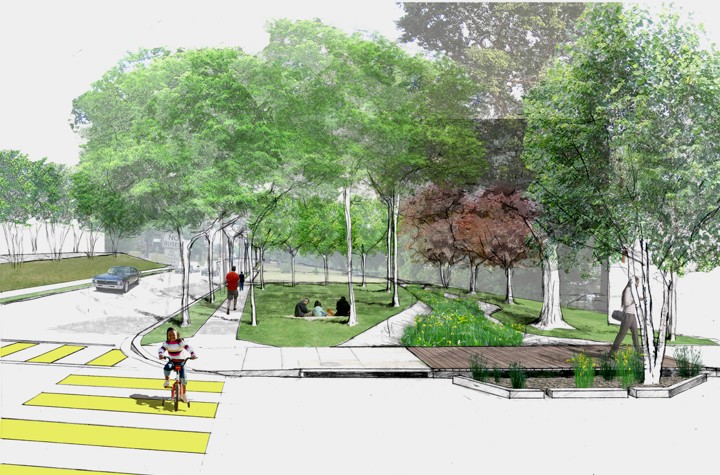Community Sense

When you build green, you are building safe, comfortable, and healthy homes. You are not only building a community - you are building for community.
Healthy homes
High performance design and construction is the path to healthy housing. Using green materials lets you care for residents, especially those with compromised immune systems and respiratory ailments, including children and seniors. Flooring, insulation, and finishes that reduce dust and release low levels of volatile organic compounds (VOCs) help to keep asthma in check. Good ventilation systems that are designed to efficiently bring fresh air into a home can reduce moisture problems, eliminate pollutants, and increase indoor air quality.
Neighborhoods for community
Housing planned with input from residents and neighbors encourages community ownership. When you link homes to parks, gardens, and nearby businesses, residents have places to gather and to establish a positive presence in the neighborhood. An emphasis on safe, well lit streets for pedestrians and public transit creates an environment for kids, not cars, and encourages active lifestyles.
Services nearby
When schools, grocery stores, banks, churches, pharmacies, and other key services are nearby or easily accessible via transit, residents will spend more time with their families and in their neighborhood. If you show a willingness to work with residents to provide the community resources they need, obstacles to development may be eased. This is especially the case when you are bringing affordable housing or mixed-use development to a neighborhood.
Working with nature
You can create dynamic new spaces where nature and community life will take root. Converting pavement into pocket parks collects and cleans stormwater, restores wildlife habitat, and cools the neighborhood with shade. Trees create comfortable outdoor 'rooms' where people can sit and talk. Natural areas can be designed to work with buildings to increase safety and to create public spaces that let residents take pride in and enjoy their community.

